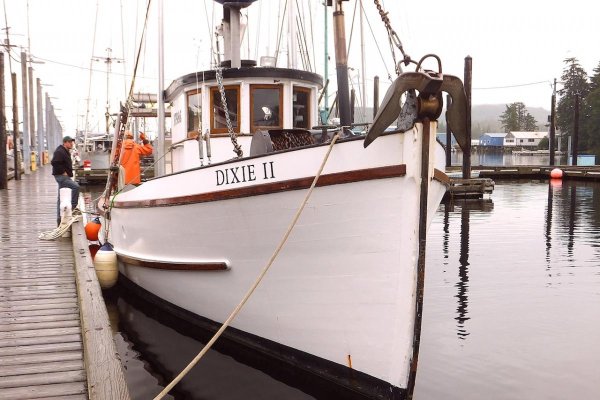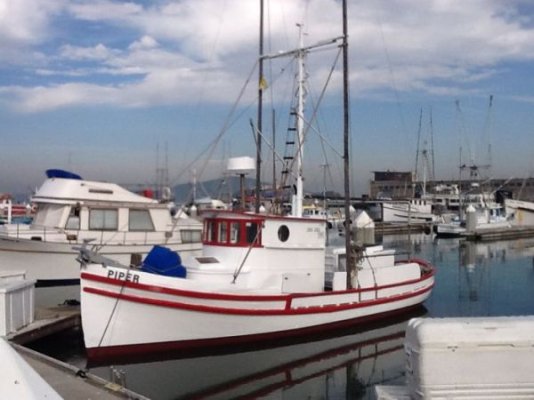Lafitte skiffs are hard chined, planing hulls with little to no deadrise. They pretty much killed the true lugger when fiberglass construction became widely accepted. With the "new" skiffs' higher speeds, shallower draft (prop tunnels), and ability to make it home every night the old luggers were mostly relegated to being left at anchor in the passes with butterfly nets. Hands would run back and forth in large OB powered flatboats between tides to sell the catch and go home for a few hours. Sadly most of the old luggers either sunk in place or after being deemed in such bad shape that a complete refit would be needed they'd be stripped of anything useful or valuable and be towed into dead end canals any where along a tree lined pass and scuttled. Sadly my grandfather's lugger met this fate. It had passed hands a couple of times after he'd sold it but it always seemed to keep a slip at his seafood dock. During one of these intended purchases the potential buyer was down in the hull checking for soundness and his screwdriver poked all the way through a plank down near the keel!! I don't have any idea of the age of that old cypress boat but I can recall that she was considered one of the older boats still around back in the early 70's! To this day I still love the smell of oil and diesel in the engine room of a wooden boat. Its one of those trigger aromas for me.
On a side note there were some "skiffs" with rounded keels but flat sterns so they'd plane out, similar to a lobster boats profile. These were known as "Harry Clan" skiffs (atleast that is what they were called down around the mouth of the Miss. River). They weren't very popular, not sure why. They did run deeper than the Lafittes and they tended to be a wetter ride but softer in a chop. By and large they also were narrower, almost like someone took a lugger hull kept the keel level and chopped the rounded stern off flat.
The pretty flare at the bow on the boat in the first post was not present to that degree on any of the cypress luggers that I can recall.















